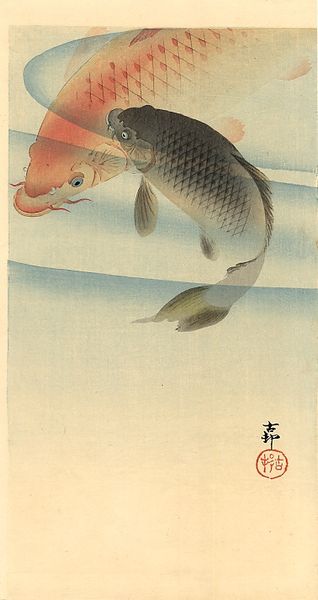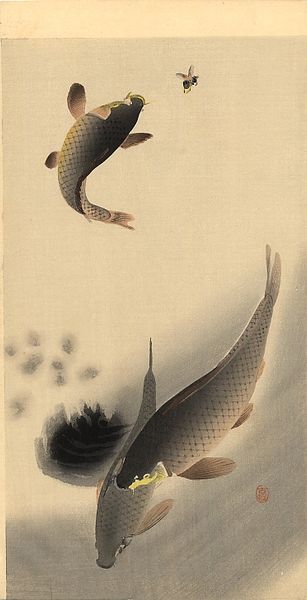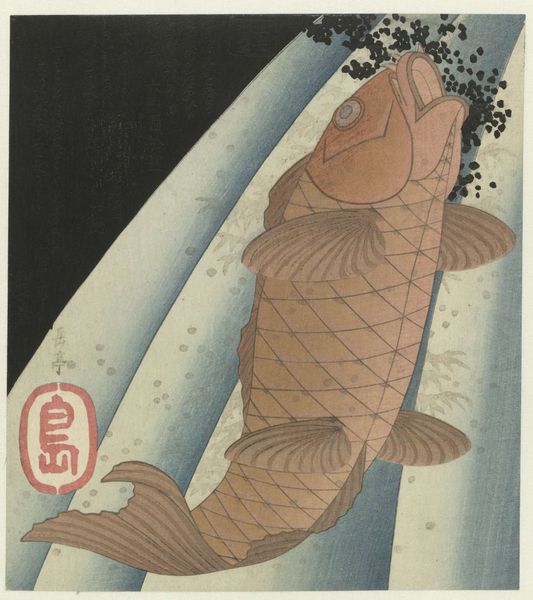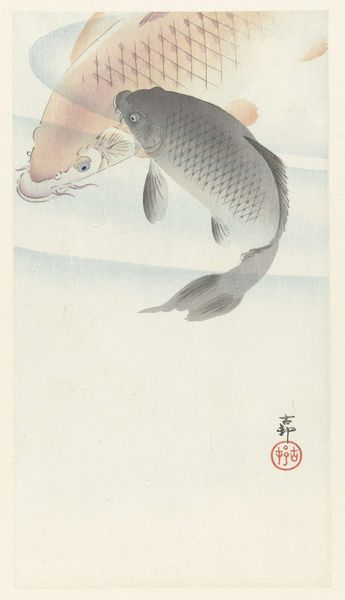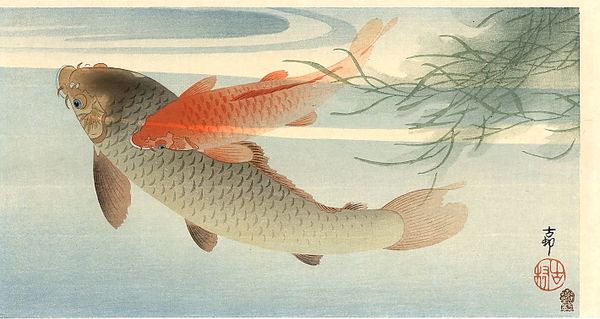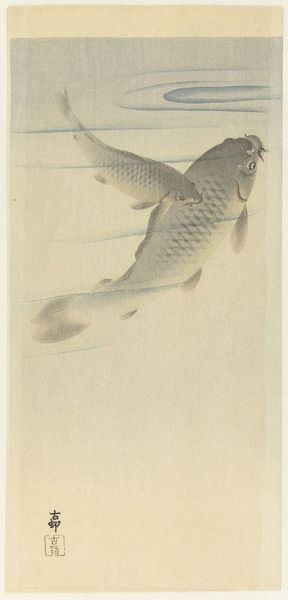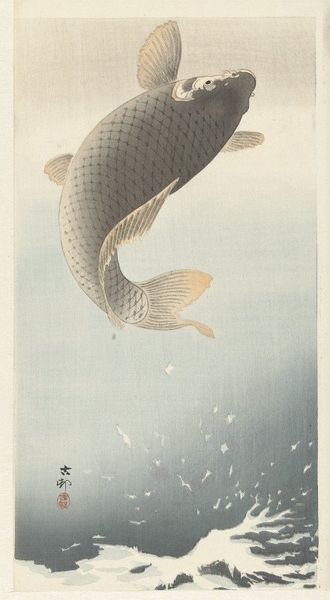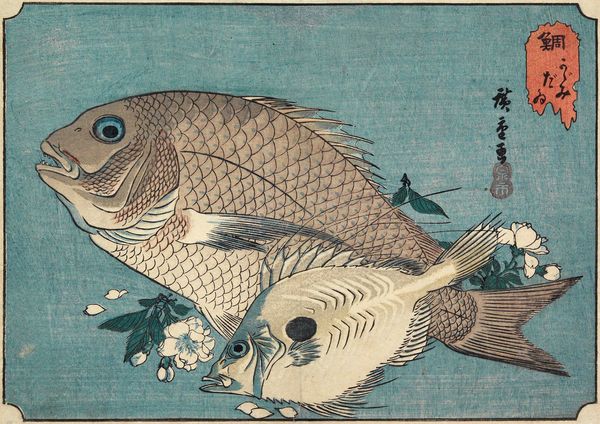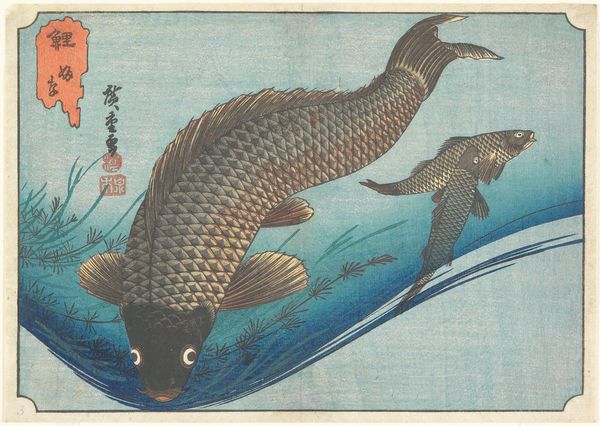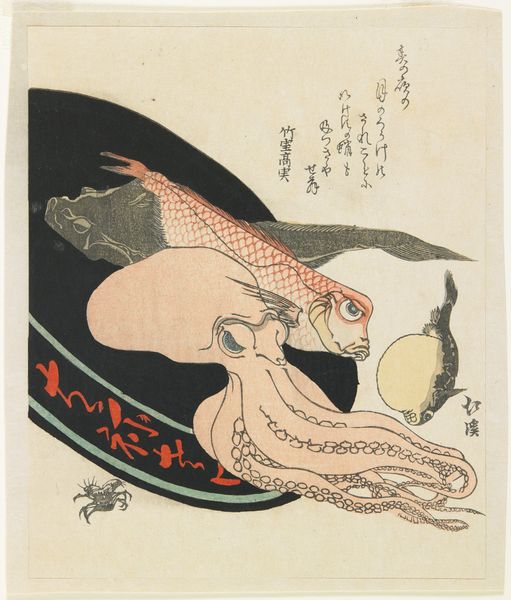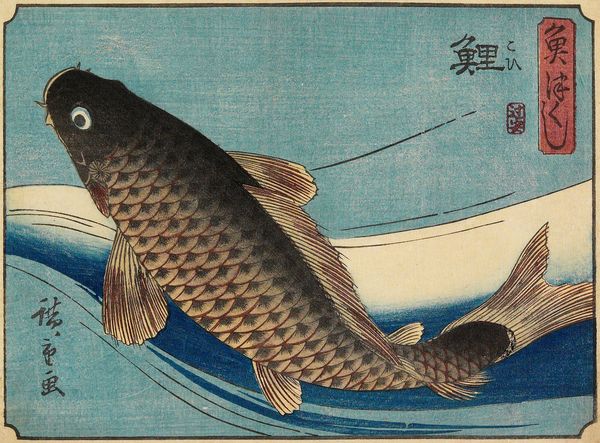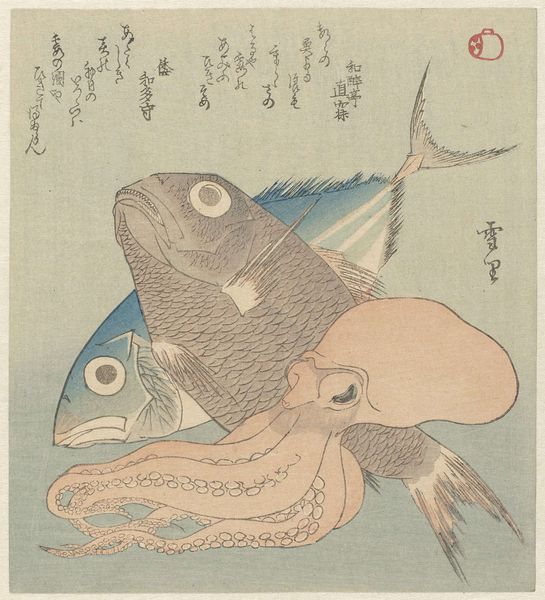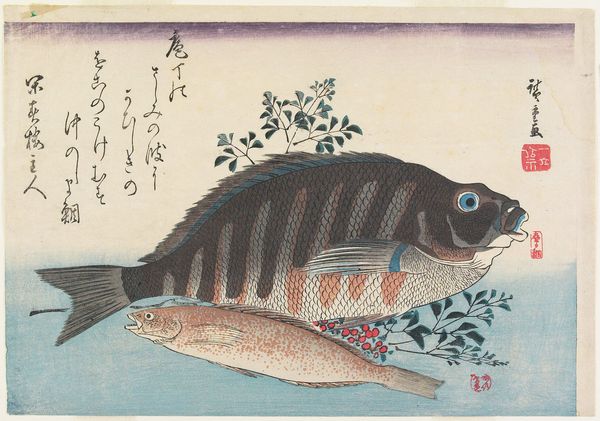
Dimensions: height 280 mm, width 245 mm
Copyright: Rijks Museum: Open Domain
Curator: This is Ohara Koson's "Karper," a woodblock print created around 1935, now held in the Rijksmuseum collection. Editor: Wow, the carp really commands attention! It has an almost heroic quality against the backdrop of that stylized waterfall. I notice the stark contrast between the delicate lines of the water and the solid form of the fish. Curator: Let’s think about that heroism in terms of production. These ukiyo-e prints were made using a division of labor - Koson would have been the artist of the design, but the block carvers and printers who transformed his image are crucial to its final impact. The arrangement allowed production to be ramped up. Editor: True, and it prompts considering broader interpretations of that powerful carp as more than just aesthetics. In Japanese culture, carp symbolize perseverance and courage, particularly their ability to swim upstream, challenging dominant power structures of the social hierarchy. Koson may well be exploring a theme of resilience during this time. Curator: I appreciate that intersectional approach that factors in gendered implications of labor alongside economic precarity and cultural expression. One crucial element in woodblock printing of ukiyo-e is the paper. The quality of paper determined color uptake and registration. Without a high degree of control, and skilled application, "Karper" would lose its refinement, its beautiful coloring. Editor: Exactly. And thinking of Koson in dialogue with contemporaneous figures – how might we situate the piece in discourses around nationalism at that moment in pre-war Japan? Is the image in tension with that? I see a symbolic link here. Is the "Karper" a coded response to oppressive cultural expectation? Is it a resistance emblem? Curator: What’s really compelling for me is that we’re having this discussion nearly 90 years later, drawing insights that likely extend well beyond the initial intention. We can see this woodblock print not just as an aesthetic object, but also as evidence of material process, collective artistic effort and potentially some kind of societal critique. Editor: Agreed. Koson gives us so much in this seemingly simple image—a space for cultural commentary on both craftsmanship and broader social themes which we still find worth revisiting and interpreting.
Comments
No comments
Be the first to comment and join the conversation on the ultimate creative platform.
